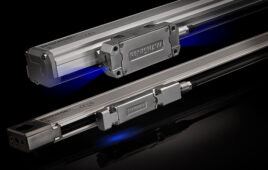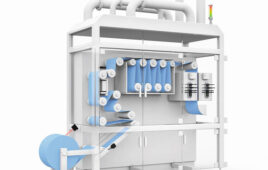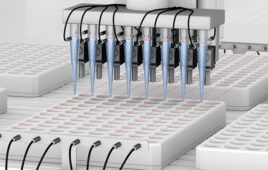
By Frantisek (Frank) Jakubec
Embedded vision is a rapidly growing field that combines computer vision and embedded systems with cameras or other imaging sensors, enabling devices to interpret and understand the visual world around them – as humans do. This technology, with broad applications, is expected to revolutionize how we interact with technology and the world around us and will likely play a major role in the Internet of Things and Industry 4.0 revolution.
Embedded vision uses computer vision algorithms and techniques to process visual information on devices with limited computational resources, such as embedded systems or mobile devices. These systems use cameras or other imaging sensors to acquire visual data and perform tasks on that data, such as image or video processing, object detection, and image analysis.
Applications for embedded vision systems
Among the many applications that use embedded vision systems are:

- Industrial automation and inspection
- Medical and biomedical imaging
- Surveillance and security systems
- Robotics and drones
- Automotive and transportation systems
Hardware and software for embedded vision systems
Embedded vision systems typically use a combination of software and hardware to perform their tasks. On the hardware side, embedded vision systems often use special-purpose processors, such as digital signal processors (DSPs) or field-programmable gate arrays (FPGAs), to perform the heavy lifting of image and video processing. On the software side, they typically use libraries or frameworks that provide pre-built functions for tasks, such as image filtering, object detection, and feature extraction. Some common software libraries and frameworks for embedded vision include OpenCV, MATLAB, Halcon, etc.
It’s also quite important to note that the field of embedded vision is active and fast moving with new architectures, chipsets, and software libraries appearing regularly to make this technology more available and accessible to a broader range of applications, devices, and users.
Embedded vision components
The main parts of embedded vision include:
- Processor platforms are typically specialized for handling the high computational demands of image and video processing. They may include digital signal processors (DSPs), field-programmable gate arrays (FPGAs), and application-specific integrated circuits (ASICs).
- Camera components refer to imaging sensors that acquire visual data. These sensors can include traditional digital cameras and specialized sensors such as stereo cameras, thermal cameras, etc.
- Accessories and carrier boards include the various additional hardware and components that interface the camera with the processor and other peripherals. Examples include memory cards, power supplies, and IO connectors.
- Housing and mechanics are the physical enclosures of the embedded vision system, including the mechanics that hold the camera, processor, and other components in place, and the housing that protects the system from external factors such as dust and water.
- The operating system runs on the processor. It could be a custom firmware or a general-purpose operating system, like Linux or Windows.
- Application SW is the software that runs on the embedded vision system to perform tasks such as image processing, object detection, and feature extraction. This software often uses a combination of high-level programming languages, such as C++, Python, and lower-level languages, like C.
- Feasibility studies evaluate a proposed solution’s technical and economic feasibility, identifying any risks or possible limitations that could arise during the development. They are conducted before the development of any embedded vision systems.
- Integration interfaces refer to the process of integrating the various components of the embedded vision system and interfacing it with other systems or devices. This can include integrating the camera, processor, and other hardware and developing software interfaces to enable communication between the embedded vision system and other systems.
Learn more here about selecting the most efficient and cost-effective vision product for your project or application.
Frantisek (Frank) Jakubec is automation and technology specialist at Balluff.
Sponsored content by Balluff
Filed Under: Balluff Sponsored Content




